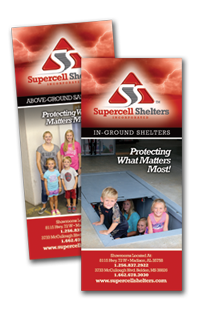5 Tips for Community Preparedness during Tornados and Severe Storm Events

5 Tips for Community Preparedness during Tornados and Severe Storm Events
While tornados and other dangerous weather events may strike without warning, there are steps that families and communities can take far in advance to help mitigate the injuries and loss of life that can be the sad consequences of these disasters. Those in charge of community spaces, such as rec centers, schools, churches and gyms, should come prepared with a carefully outlined plan to help guide others to safety and ensure that everyone is accounted for.
We’ve put together a brief outline of some of the most crucial steps to helping make sure you are as prepared as possible to lead a group to safety during a severe wind event.
1) Know the signs. While storm sirens are a sure-fire way to know that a tornado has been spotted or is imminent, there is often very little time after a siren begins to take shelter before the tornado is upon you. Knowing the signs of an incoming storm are crucial to early action. Listening to NOAA weather-alert radio at the first inkling of an incoming tornado, especially during peak tornado season, is imperative for those in charge of ensuring the safety of large groups of people. Recognizing the signs of an incoming tornado are also crucial; these can include a dark, greenish sky, hail, a large, dark, low-lying cloud that may be rotating, and a loud roaring sound. While not every instance of these signs will lead to a tornado, it is truly better to be safe than sorry.
2) Develop a system for knowing who is in the building in the event of an emergency. While this can be difficult in a space where people are frequently coming and going, such as a store, other spaces would do well to strive to keep a record of persons present if the event is occurring during high tornado season. Employees and staff should always be accounted for in advance, and those responsible should take a head count as soon as you have reached shelter.
3) Develop a plan to communicate warnings to those with disabilities or who do not speak English. Teaching dedicated personnel relevant phrases in languages besides English, including sign language, that are relevant to your area’s immigrant population will help ensure the safety of those who might not otherwise be able to follow instructions.
4) Know where to go. Clearly posting instructions (in multiple languages, if possible) with directions to the nearest storm shelter will prove extremely useful in the panic that can precede a severe storm. It is also imperative to know your options in unfamiliar circumstances; if there is no basement in a building, the center-most room on the lowest level that is away from corners, doors, windows and outside walls is the safest option. Cars, mobile homes and other vehicles are not safe in a tornado, nor are bridges or overpasses. Debris from tornados causes the most injuries and deaths, so being in a firmly-grounded place with 360-degree coverage is your best option.
5) Invest in a community storm shelter. Even if your community center has a spacious basement or other room that seems as if it may sufficiently shield a group from a tornado, the only spaces that are specifically tested and proven to provide safety in a storm are specially constructed tornado shelters. We offer such above-ground community tornado shelters in Little Rock, AR, AL and MS, in sizes up to 48 ft. in length.


